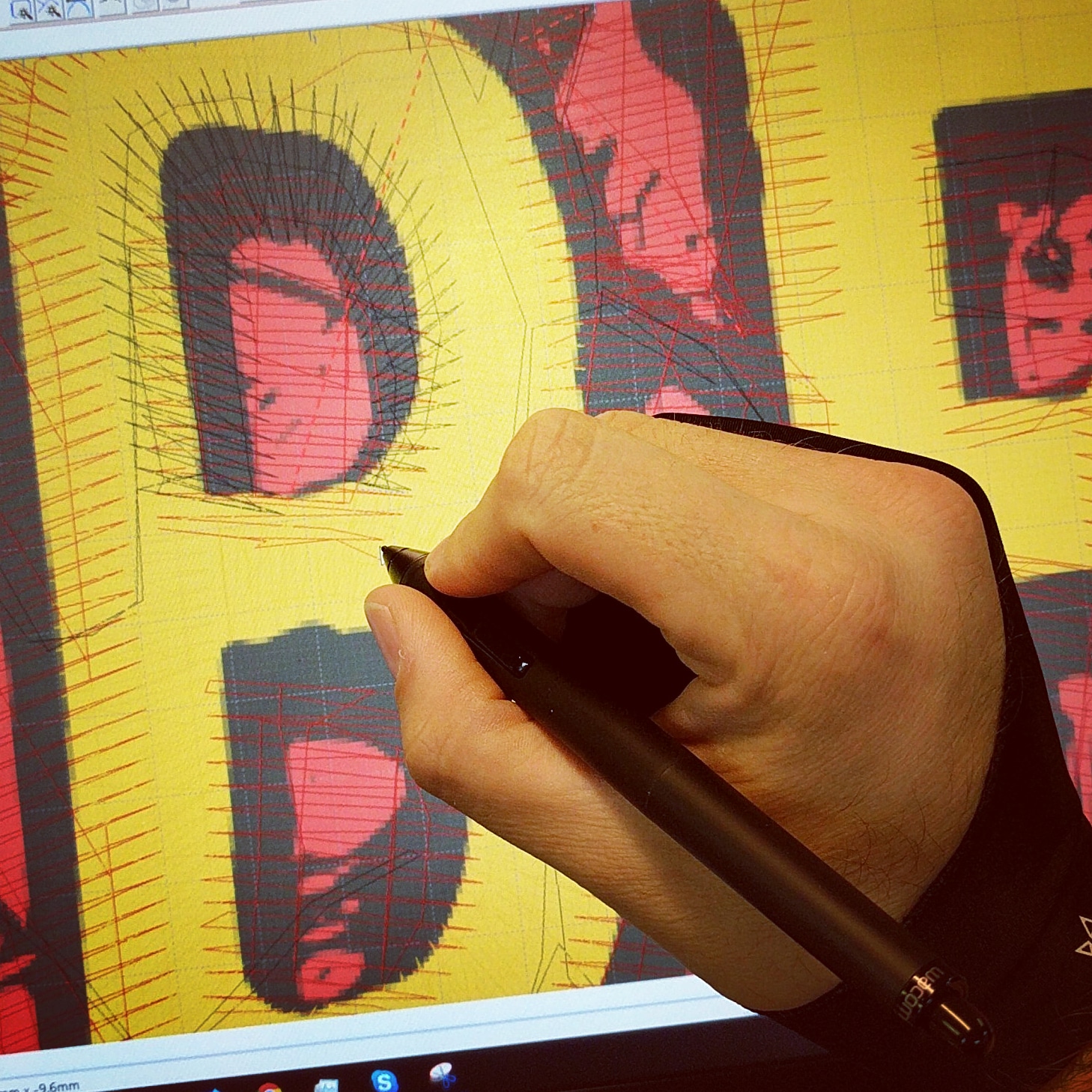Top Quality Digitizing for Embroidery: Specialist Workmanship
Top Quality Digitizing for Embroidery: Specialist Workmanship
Blog Article
Mastering the Embroidery Digitizing Refine: Your Ultimate Guide
Needlework digitizing is a meticulous craft that calls for precision and knowledge to translate elaborate styles right into electronic formats for equipment needlework. As craftsmens get started on this journey to grasp the needlework digitizing process, an extensive understanding of the essentials sets the foundation for excellence.

Understanding Embroidery Digitizing Essentials
Embroidery digitizing fundamentals create the structure upon which intricate layouts are equated right into machine-readable layouts for accurate sewing. This first action in the embroidery digitizing process is crucial for ensuring that the final stitched product is a loyal depiction of the initial layout. Understanding embroidery digitizing essentials entails realizing crucial concepts such as stitch types, sew instructions, thickness, rug, and pull settlement.
Stitch kinds play an essential role in figuring out the aesthetic and textural result of the embroidered design. By choosing the suitable stitch kind, whether it be satin, fill, or running stitch, digitizers can attain the desired impact and enhance the general high quality of the needlework. Additionally, stitch instructions affects the circulation and dimension of the layout, while density establishes the spacing and protection of the stitches.
Additionally, underlay sewing provides stability to the layout by securing the textile and stopping distortion during the needlework process. Draw payment is an additional crucial consideration to neutralize the all-natural propensity of textile to agreement when sewn. Grasping these embroidery digitizing fundamentals is basic for creating professional-quality embroidered items.
Picking the Right Digitizing Software Program
Choosing the appropriate digitizing software is a critical choice that significantly impacts the efficiency and high quality of the embroidery digitizing process. Digitizing for Embroidery. When picking the appropriate digitizing software, it is vital to take into consideration variables such as the complexity of styles you prepare to create, the user-friendliness of the software application, the degree of client assistance provided, and the compatibility with your embroidery machine
There are different digitizing software application options readily available out there, ranging from standard programs for beginners to sophisticated software application for specialist digitizers. Some preferred choices consist of Wilcom EmbroideryStudio, Hatch Embroidery Software Application, and PulseID. These software provide a variety of tools click here to find out more and functions to aid you produce complex designs easily.
Before deciding, it is recommended to explore the different software program choices through free tests or demos to determine which one ideal suits your needs. Additionally, reviewing testimonials and seeking recommendations from knowledgeable digitizers can offer useful understandings into the strengths and weaknesses of each software package (Digitizing for Embroidery). By meticulously assessing your demands and contrasting the features of various digitizing software program, you can make an enlightened selection that boosts your embroidery digitizing workflow
Digitizing Devices and Strategies

Optimizing Layout Settings for Needlework
Grasping the details of layout setups is essential in attaining ideal results in the embroidery digitizing process, building upon the foundation laid by recognizing digitizing devices and methods. When optimizing layout settings for needlework, it is vital to consider elements such as stitch kind, density, padding, draw settlement, and registration. Registration settings straighten different elements of the layout properly, preserving overall layout stability.

Troubleshooting Common Digitizing Issues
When encountering usual digitizing problems throughout the needlework procedure, it is important to understand the origin and apply reliable remedies without delay. One typical issue is stitch density issues, where stitches may be as well thick, creating the fabric to pucker, or as well thin, bring about spaces in the layout. Readjusting the stitch thickness settings in the digitizing software program can help resolve this problem.
One more frequent challenge is thread breaks during the needlework procedure. This can occur as a result of different reasons such as wrong stress settings, boring needles, or using low-quality string. Making sure correct maintenance of the needlework device, including normal resource needle changes and tension modifications, can minimize the incident of string breaks.
In addition, layout enrollment errors can lead to misaligned aspects within the needlework design. Inspecting the style positioning in the digitizing software and making required changes before sewing can assist in avoiding this issue. By dealing with these usual digitizing concerns without delay and effectively, you can guarantee a smoother embroidery process and high-grade ended up products.
Verdict
To conclude, grasping the embroidery digitizing process requires a strong understanding of the essentials, the check over here ideal selection of software program, and understanding of devices and techniques. Maximizing style settings and fixing usual digitizing issues are important steps in making certain high-grade embroidery outcomes. By adhering to these actions vigilantly, one can attain precision and efficiency in the digitizing procedure.
Report this page